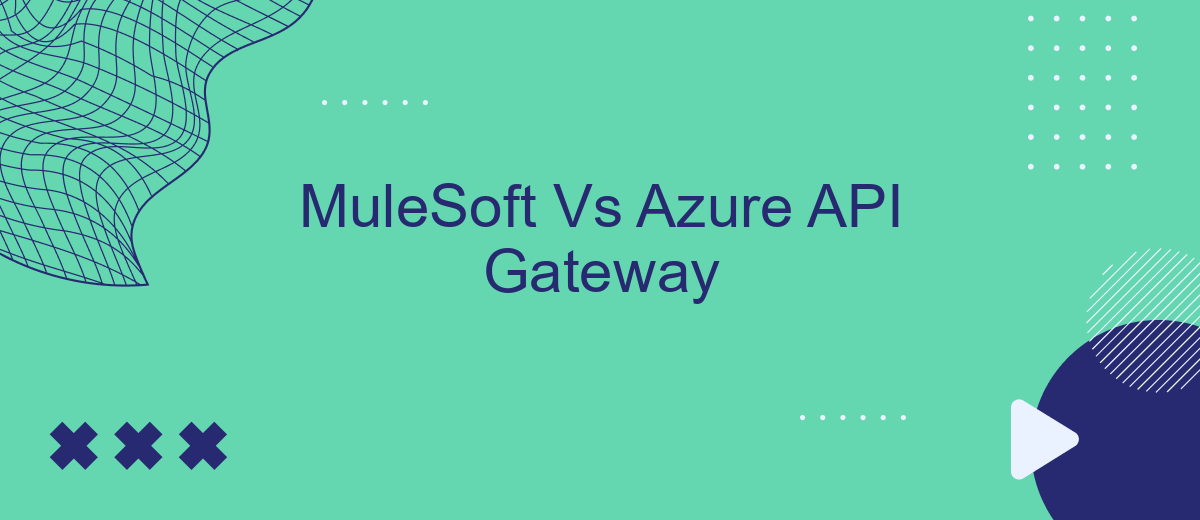In the rapidly evolving landscape of API management, choosing the right platform is crucial for seamless integration and efficient operations. This article delves into a comparative analysis of MuleSoft and Azure API Gateway, exploring their features, capabilities, and unique advantages. Whether you're a developer or an enterprise decision-maker, understanding these tools can significantly impact your API strategy and overall business performance.
Introduction
In today's rapidly evolving digital landscape, businesses are increasingly relying on API gateways to manage and streamline their integrations. Two prominent players in this domain are MuleSoft and Azure API Gateway, each offering unique features and capabilities to address diverse integration needs.
- MuleSoft: Known for its robust Anypoint Platform, MuleSoft offers extensive tools for API management, integration, and analytics.
- Azure API Gateway: A Microsoft service that provides secure and scalable API management, seamlessly integrating with other Azure services.
- SaveMyLeads: A service that simplifies the integration process, enabling businesses to automate lead data transfer without needing extensive technical knowledge.
Choosing the right API gateway can significantly impact your business operations, influencing everything from data flow to security. This article aims to compare MuleSoft and Azure API Gateway, helping you make an informed decision based on your specific requirements. Whether you're a small business or a large enterprise, understanding the strengths and weaknesses of each platform is crucial for optimizing your integration strategy.
Features

MuleSoft offers a robust set of features designed to streamline API management and integration. It provides a unified platform for designing, building, deploying, and managing APIs and integrations. Key features include API design and testing tools, a comprehensive API management suite, and pre-built connectors for various systems and services. MuleSoft also supports advanced data transformation and orchestration capabilities, making it easier to integrate complex systems and workflows.
Azure API Gateway, on the other hand, focuses on providing a scalable and secure platform for API management within the Azure ecosystem. It offers features such as API versioning, request and response transformation, and built-in security mechanisms like OAuth2 and JWT validation. Azure API Gateway also integrates seamlessly with other Azure services, allowing for the creation of complex, cloud-based solutions. For businesses looking to streamline their integration processes, tools like SaveMyLeads can be invaluable, offering automated workflows and integrations to simplify data management across multiple platforms.
Pricing and Deployment

When comparing MuleSoft and Azure API Gateway, pricing and deployment are crucial factors to consider. Both platforms offer scalable solutions, but they differ in their pricing models and deployment options, which can significantly impact your decision based on your specific needs and budget.
- MuleSoft Pricing: MuleSoft operates on a subscription-based model, offering various plans based on the number of APIs and integrations. It provides a comprehensive suite of tools for API management, integration, and analytics, making it a robust but potentially costly option.
- Azure API Gateway Pricing: Azure API Gateway uses a pay-as-you-go model, charging based on the number of API calls and the amount of data processed. This can be more cost-effective for businesses with fluctuating API traffic, as you only pay for what you use.
- Deployment: MuleSoft can be deployed both on-premises and in the cloud, providing flexibility for different IT environments. Azure API Gateway, being a cloud-native solution, is designed for seamless integration with other Azure services, offering a streamlined deployment process.
For businesses looking to simplify their integrations, services like SaveMyLeads can be highly beneficial. SaveMyLeads automates the process of connecting various platforms, reducing the complexity and time required for manual integrations. This can complement both MuleSoft and Azure API Gateway by ensuring smooth and efficient data flow across systems.
Use Cases

When comparing MuleSoft and Azure API Gateway, it's essential to understand the distinct use cases for each platform. Both tools offer robust API management capabilities, but their optimal applications can vary depending on the specific needs of an organization.
MuleSoft is particularly well-suited for enterprises that require extensive integration capabilities across a wide range of systems. Its Anypoint Platform allows for seamless connectivity between on-premises and cloud applications, making it a versatile choice for complex environments. On the other hand, Azure API Gateway excels in scenarios where organizations are heavily invested in the Microsoft ecosystem, leveraging Azure's cloud-native services for scalable and secure API management.
- MuleSoft: Ideal for complex, multi-system integrations and hybrid environments.
- Azure API Gateway: Best for organizations using Azure's cloud services and looking for tight integration with other Microsoft products.
- SaveMyLeads: Suitable for businesses seeking automated lead generation and integration with various marketing tools.
Ultimately, the choice between MuleSoft and Azure API Gateway depends on your specific requirements and existing technology stack. By understanding the unique strengths of each platform, organizations can make informed decisions that best support their integration and API management needs.
Conclusion
In conclusion, both MuleSoft and Azure API Gateway offer robust solutions for API management, each with its unique strengths and capabilities. MuleSoft excels in providing a comprehensive integration platform with its Anypoint Platform, making it an excellent choice for organizations seeking extensive connectivity across various applications and services. On the other hand, Azure API Gateway stands out with its seamless integration within the Azure ecosystem, offering scalable and secure API management for enterprises heavily invested in Microsoft technologies.
When deciding between the two, it is crucial to consider the specific requirements and existing infrastructure of your organization. For businesses looking to streamline their integrations further, leveraging services like SaveMyLeads can be beneficial. SaveMyLeads automates data transfer between different platforms, enhancing the efficiency of your integration processes. Ultimately, the choice between MuleSoft and Azure API Gateway should align with your long-term strategic goals and technical needs, ensuring a scalable and effective API management solution.
- Automate the work with leads from the Facebook advertising account
- Empower with integrations and instant transfer of leads
- Don't spend money on developers or integrators
- Save time by automating routine tasks
FAQ
What are the primary differences between MuleSoft and Azure API Gateway?
Can MuleSoft and Azure API Gateway be used together?
Which platform is better for scalability?
Is there a significant cost difference between MuleSoft and Azure API Gateway?
How can I automate and streamline integrations with MuleSoft or Azure API Gateway?
Don't waste another minute manually transferring leads from Facebook to other systems. SaveMyLeads is a simple and effective tool that will allow you to automate this process so that you don't have to spend time on the routine. Try SaveMyLeads features, make sure that this tool will relieve your employees and after 5 minutes of settings your business will start working faster.

